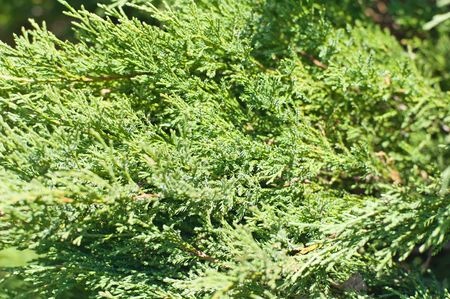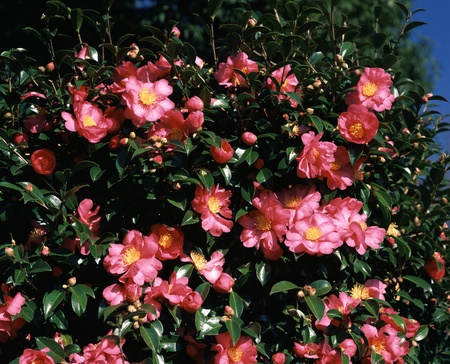Evergreen Shrubs in Landscaping – Five to Consider
Use of evergreen shrubs in landscaping is an extremely common gardening practice. By definition, an evergreen is a plant that retains its leaves or foliage year round, in contrast to a deciduous plant which sheds it’s foliage in the winter. Both can be used in the same landscape and planted as either trees or shrubs. This article will focus on shrubs.
Benefits of Evergreen shrubs
Not surprisingly, there are a number of benefits to using evergreens:
- Taller shrubs can be planted to accent or provide a background for smaller plants.
- Evergreens can be used for privacy. They can be planted as a hedge to shield your yard from a neighboring property or work area.
- They do not lose their foliage in the winter, so they can provide color and beauty year round.
What are the best ones?
Different evergreens will grow better in some areas than they do in others. It is very important that you refer to hardiness zone maps for your area to choose shrubs that will work well where you live. With that said, these are some of the better evergreen shrubs to put in your landscape:
- Junipers

Junipers in Sun
Adaptable from zones 3-9 they can be planted in most of the United States. They have needle like foliage, which can be a nice contrast from typical leafy foliage. Some varieties are used as groundcovers, but other varieties, such as Sea Green will grow between 4-6 feet. There are many varieties, so you should be able to find the size that fits you with a little research.
- Yews
Like the Juniper the Yew also has needle like foliage. The typical hardiness range is zone 4 to zone 8, so it can be planted across much of the United States. Certain varieties such as Canadian Yew, as the name would suggest, can be grown in the far northern areas of the US, to Zone 2. Yews will grow in sun or shade, which makes them versatile plants, and the wide variety of species available will assure that you can find one that will attain the right size for you.
- Hollies
Hollies are one of the best and most commonly grown plants throughout the middle to southern US. They are adaptable from zones 3 – 9 but the varieties are more plentiful in the range of Zone 5 9. You can find dwarf varieties, like dwarf yaupon, that will get only around 3 feet tall. Conversely, a Nellie R. Stevens variety can be trained in shrub form or as a small tree. And there are many varieties in between.
- Camellias

Camellia Sasanqua in Late Fall Bloom
A very popular flowering shrub grown primarily in the southern United States, the Camellia is hardy in Zones 7-9. The Japonica variety blooms in winter-spring while the Sasanqua variety blooms in late fall. Newer hybrid varieties are expanding the potential of growing Camellias in northern and Midwestern climates
- Azaleas
Another primarily southern plant, the azalea is one of our most beautiful flowering shrubs. They are adaptable from Zones7-9. Mostly a spring blooming evergreen, there are some varieties that will produce blooms several times a year. Azaleas are quite picky when it comes to the planting bed. They require an acidic soil and excellent drainage.
Summing it up
Evergreen shrubs should be a part of any landscape. The ones listed above are but a few of the many, many different kinds. As noted above, paying close attention to the zones a plant will grow well in, as well as putting them in the proper sun or shade, with proper soil preparation, will get you set up in good shape for success.
2 thoughts on “Evergreen Shrubs in Landscaping – Five to Consider”
I don’t have any camillias in my yard but I think this would make a nice addition as I love the flowers in the picture above. I have a few azaleas but I find that the bloom is so short.
I like shrubs that are nice to look at. I am thinking of getting some holly to add to my garden. With the holly bush, how can I tell if it will have the red berries on it?
Dinh,
Your question on the holly is a good one. Hollies are a little unusual in that a plant will either bear male flowers in springtime or it will bear female flowers. A “male” plant cannot produce berries, but it is required to be close enough to a “female” plant so that the pollen from its flowers can be carried, often by bees, to the flowers on the female plant. The berries will be green, and then in the fall and winter they will turn to the red color.
It is not that easy to identify what is a male plant and what is a female, and you might need to have someone at the nursery help you. The male plants produce small white flowers that contain the pollen and attract the bees.